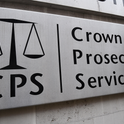The intelligence agencies and the police have long considered the Houses of Parliament to be a prime terrorist target. Over time the perimeter protection given to the Palace of Westminster—the physical bollards outside the building; the closure of some points of entry; the increasing access control of those entries remaining and the routine and inescapable security checking of everyone coming in—all this has been part of the daily life. Security precautions inside the building are also extensive and systematic.
The limited—albeit horrifying—casualties that the assailant (who seems to have been acting by himself) was able to inflict shows the value of these physical precautions and of the training which the police have had to deal with mobile marauding attacks. As he stormed the vehicle entrance to the Palace he was challenged immediately by a police officer who was stabbed (and subsequently died). At a second line of defence an armed officer swiftly moved forward and, a few yards further on, shot the assailant dead. The attacker did not succeed in his evident aim of getting through the perimeter into the heart of the Palace to maim and kill. The police did well.
The greater tragedy unfolded on Westminster Bridge. It took place as a prelude to what was intended to be the main attack on Parliament. The assailant drove onto the pavement and mowed down pedestrians, some of whom have died and others of whom have been seriously injured, before ramming his car into the railings round the Palace. Overall, there are about 40 victims. It is very difficult to see how precautions could be taken to stop such behaviour except at exceptionally high and costly levels of inconvenience.
This terrorist attack has resulted in the largest toll of victims since the attack on 7/7. But it seems unlikely that it was the result of anything like the level of organisation or preparation involved in that earlier plot. Low tech attacks like this, involving no more than a car and a knife, which can be rapidly and locally prepared with little if any trail for agencies or police to pick up to disrupt, poses a very particular challenge. The difficulty of obtaining firearms in the UK is a major constraint on the level of violence and the number of victims involved in low tech attacks are likely to be less than could occur with more and bigger organisation. This attack nevertheless shows what can be done by one man determined to kill. Wisely, the government does not purport to give assurances of total security.
So, who was the perpetrator who killed policeman yards from the place where, in Margaret Thatcher’s government, Airey Neave MP lost his life to an IRA bomb? The police have said they think they know who the killer was, and that he was “inspired” to act—which means Islamist terrorism—but they have not revealed his name. So rapid a statement suggests that they may have recognised the body in their possession, in which case he may well have a track record. He probably had a few accomplices. It does not however necessarily follow that any of them were or should have been on a watch list. This story will continue to unfold.
Tragedy in Westminster
This terrorist attack has resulted in the largest toll of victims since the attack on 7/7
March 23, 2017

©Xinhua/SIPA USA/PA Images











